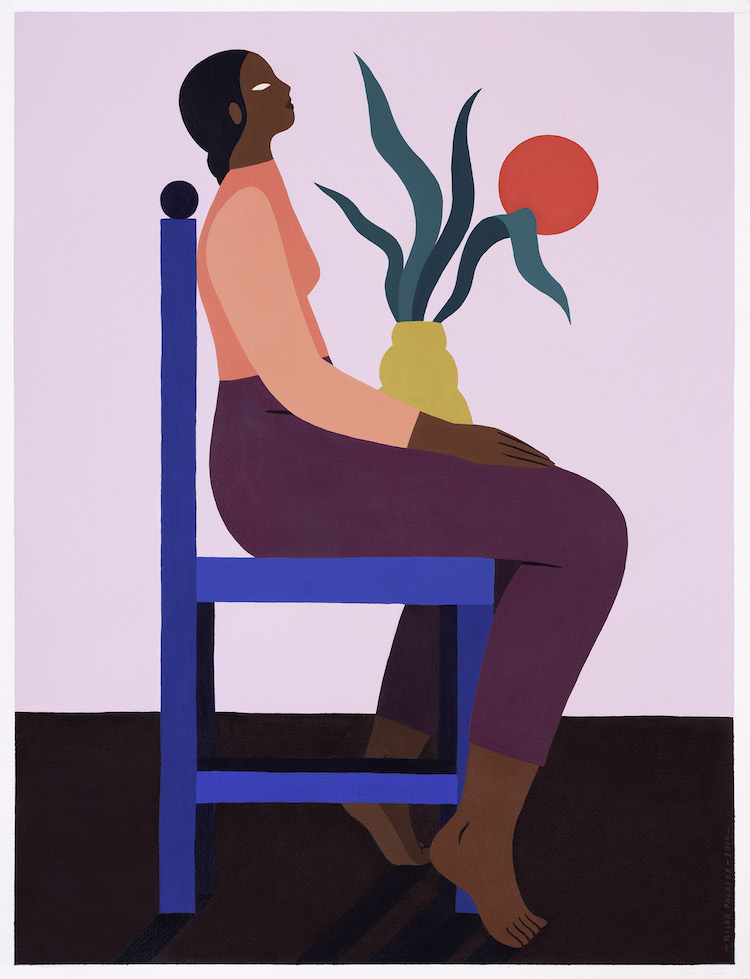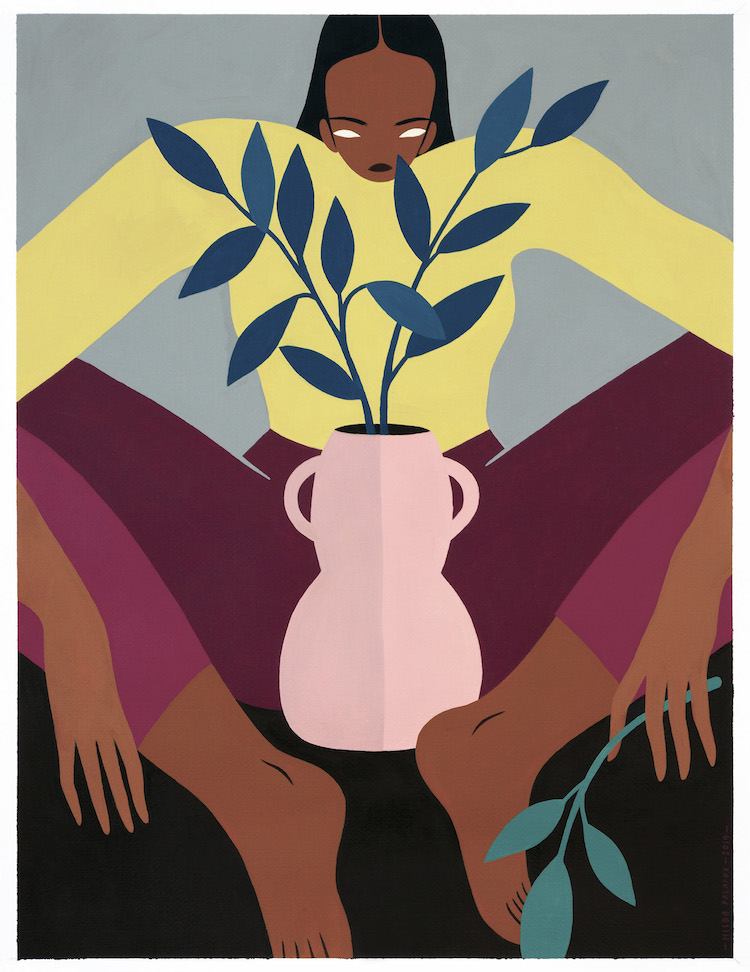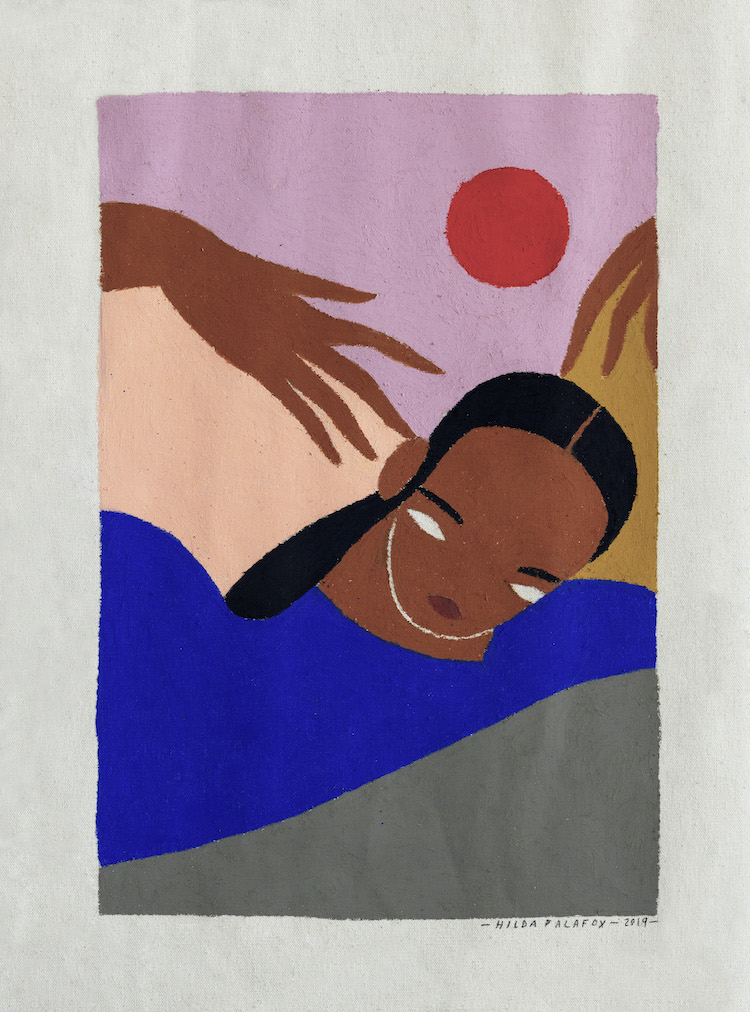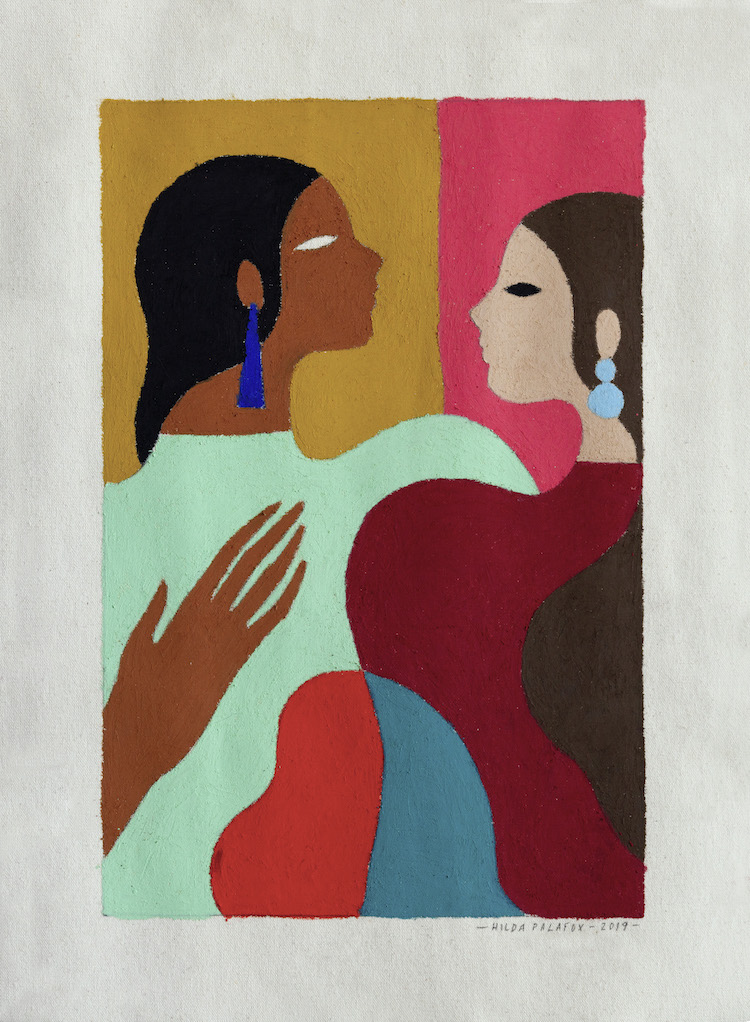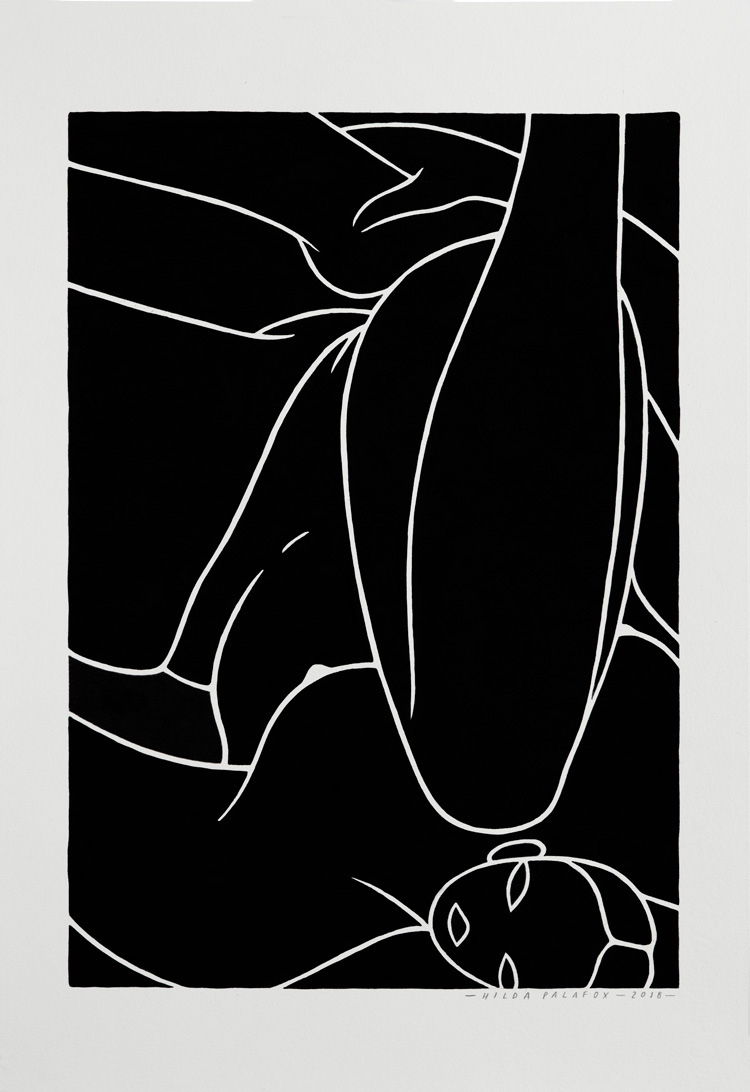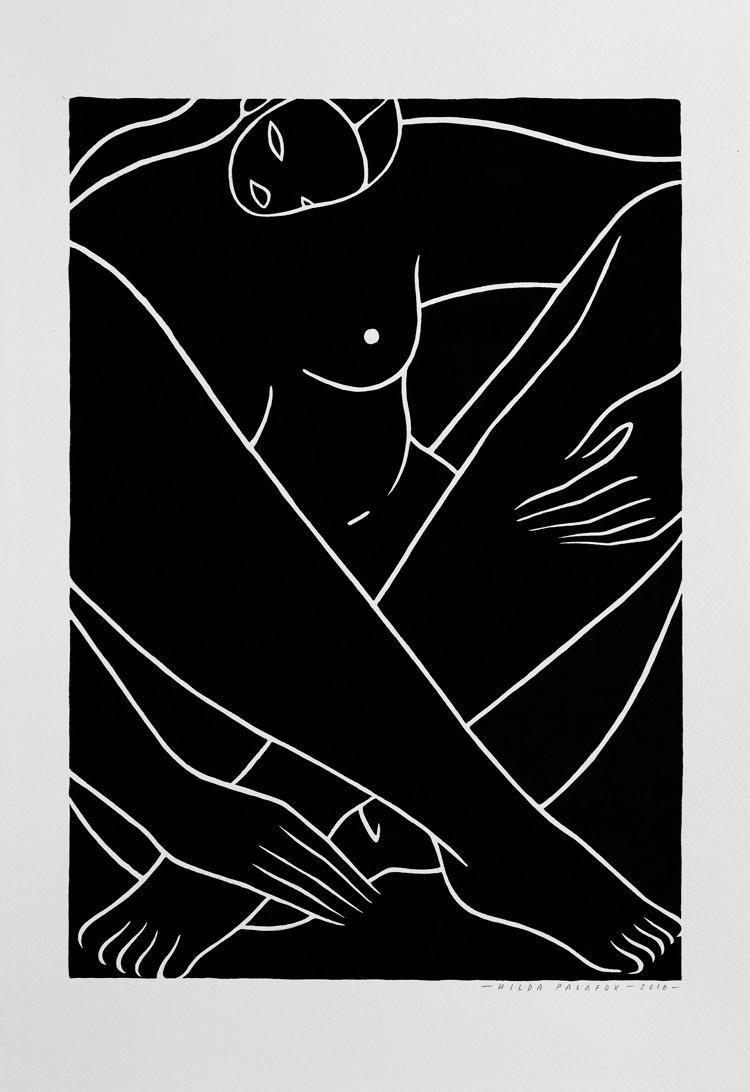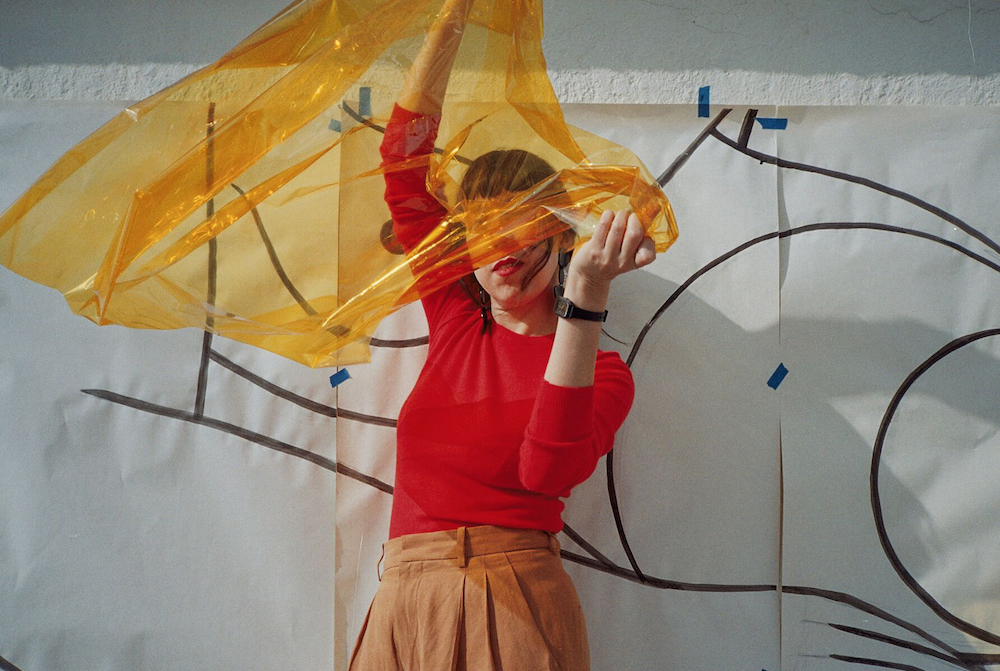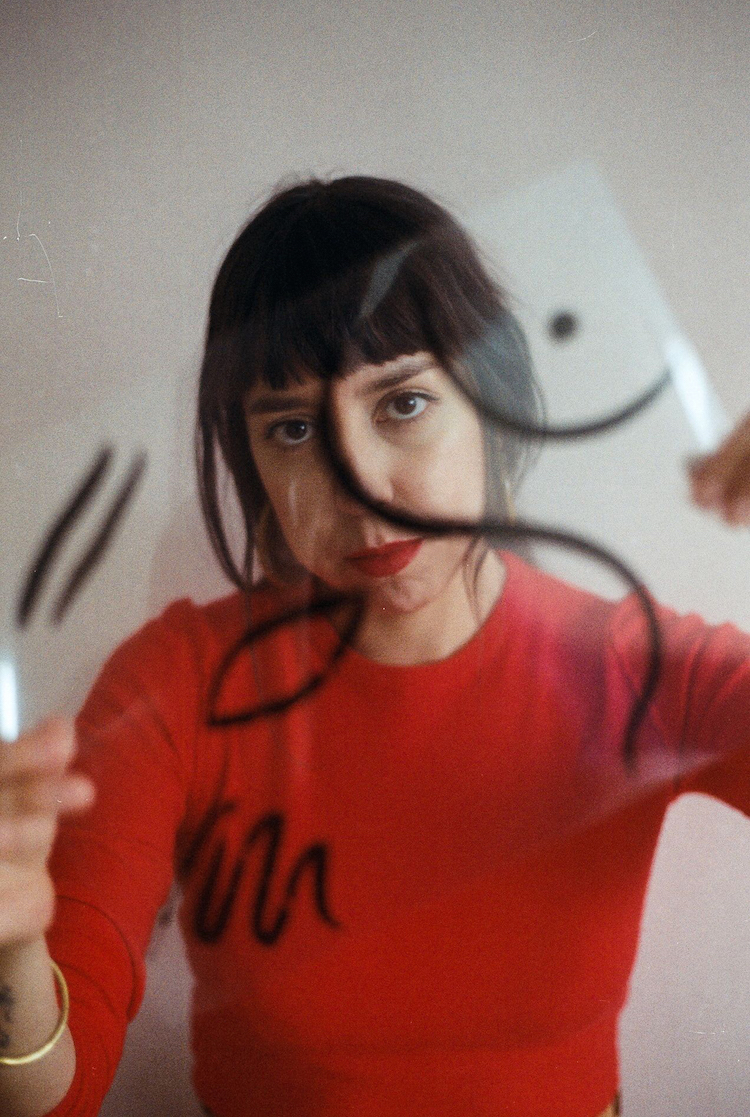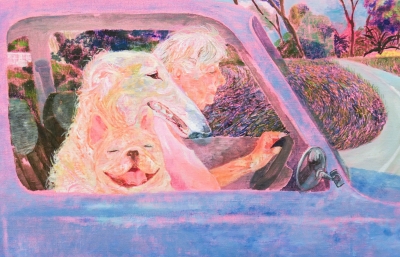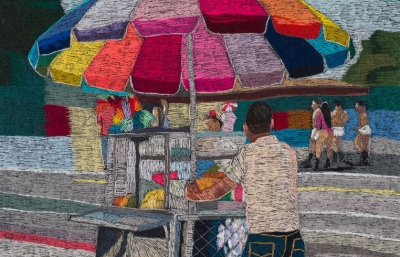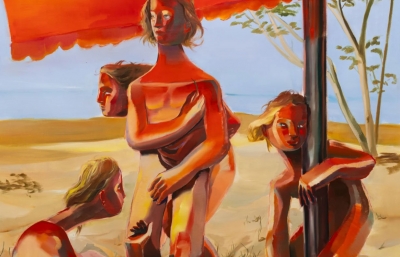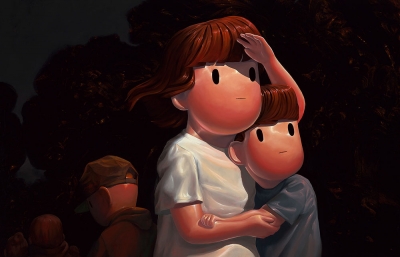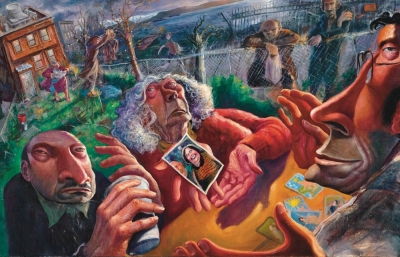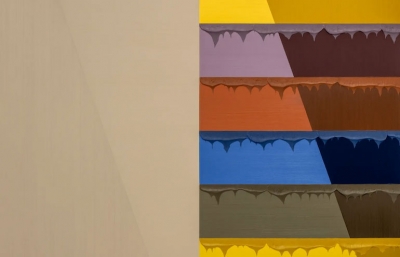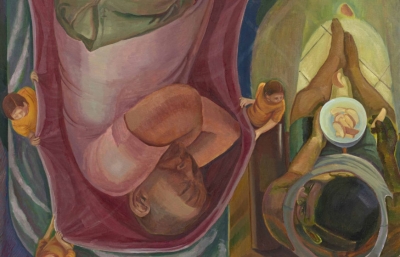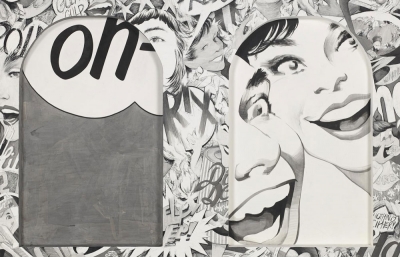Femininity in its original state, lusciously embodying Mother Earth with weight, strength, and beauty—Hilda Palafox glorifies a woman's world. If you have followed her career, you have admired the evolution. Characters who once evinced the innocence and passivity of the young in reductive ambivalence now have a presence. Body commands space.
Born and based in Mexico City, Hilda has worked hard to find herself one of the most acclaimed female urban artists in her country, barely finding time to appreciate the momentous moment. Solo shows in Japan and Querétaro (Mexico) vie with murals, brand collaborations, group exhibits, and Miami Art Basel week. Be it Denver, Madrid, Tokyo, Montreal, or the idyllic beach town of San Pancho on the Pacific coast, and even smoggy Mexico City, Hilda's work meets our gaze. Her women have acquired a collective voice that speaks in bold chorus: I am present but you can't possess me. I am here, this is my body, and this is what it looks like. Whether I float or stand firmly planted, this is my space and I will bestow my stare in my own good time.
On a hot spring evening in the historic center of Mexico City, huddled around a dining room table in her home studio, with her partner Joaquín, two cats and many mosquitos, I sat down with her to learn a bit more about her story.

Ivonne Alcántara: Where do you think you got your artistic sensibility?
Hilda Palafox: My mother became a stay-at-home mom after my youngest sister was born. My dad was an engineer, and I used to think no one in my family had that creative side. After giving it some thought, I realized it came from my mom. She's not an artist, but she was always so crafty. With our school assignments, she taught me how to make everything impeccably, and would really take it to the max. She would exploit creativity, experimenting with fabrics and materials. I think I got that part of myself along with my search for an aesthetic.
When did you decide you wanted to indulge in an artistic practice?
I always wanted to be in a creative field, and I recall drawing from a very young age. When all my friends were applying to art or design school at the end of high school, someone drilled into my head that art wouldn't take me anywhere, but did recommend a school (Escuela de Diseño del INBA) that offered a major that taught design in a broader sense than, say, just graphic. The four-year course was called Integral Design, but even though Illustrator and Photoshop were at their boom, we didn't get them until our last year. It was a lot of handy work, cutting, pasting, models, so many illustration techniques, textile design, graphic, industrial, a bit of everything. Towards the end, I focused on graphic and even got certified for editorial production, which I did not pursue in the end.
Do you think this foundation has influenced your current work?
The fact that I paint flat patches of color is very influenced by graphic design; the cleanliness of the forms, the concept of less is more, it's what I like doing and enjoy. I like using my hands, as well, with ceramics being hands-on with the material, filling in my paintings with the brush. Sometimes I can spend three hours making my colors. I love it. Synthesizing colors and shapes comes from there, as well. I think that, because I wasn't taught solely in an artistic focus, I'm not all technique. I feel more free to go towards what my eye fancies.

How did you actually start your artistic career?
Back then, around 2005, designers fresh out of school aspired to work at a publicity agency. I contacted an agency after university, where I stayed for four or five years. It wasn't my deal, and creatively, I was rotting. I barely drew and was exhausted every night when I got home. I don't regret it at all, though, I learned so many things that I later used to start my own career, like how to present my work and sell it.
I felt quite lost at first. I didn't really have a style. I saw how people were doing collective shows and projects, thinking that's what I wanted, but didn't know how to enter that scene. I quit the agency and got moving, making contacts, really making my way. I wanted to do editorial design and illustration for children's books, but then life brought me here, which ended up being better, and I've taken so much advantage of that. Social media was also key. Instagram came and people around the world got to know me and started inviting me to show and work outside of Mexico, which is where I think everything started growing.
Can you tell us about your work, your characters, and the changes they've gone through?
I always had a thing for drawing women or girls. At first, a lot of it was representing myself and whatever I was going through, very emotionally driven. It just wasn't enough, and didn't fulfill me. I became aware that people would identify my work as feminist: the body language, the mysterious glares, the fluidity of their presence. I started noticing these observations, and one day it clicked, “There is something I am saying here and I have not been paying enough attention.” So, from that moment, I made sure I took advantage of this subject that I was already dwelling in and consciously work around, subtly but fiercely. This moment of realization made more clear the direction I wanted to take, and still, I'm continuously trying to ground this subject more and more, to really know what it is that I want to say. There is a lot to say on the subject of the feminine or feminism, and I want to embrace all of it and present it when the moment is right and when it comes naturally from me.

Is there a dividing line between Poni and Hilda?
Using the name Poni came from being young and seeing this more like a game, and it stayed mainly because people knew that pseudonym, having followed me from the start. When I started making the shift into galleries and stepping away from just doing murals or editorial work, I started signing as Hilda. It's important for me that people make the connection between both names, and I'll keep going back and forth from one to the other. I want to leave Poni in the urban aspect of my work though, and sign the more serious things with my full name.
Do you feel influenced by the Mexican art that has surrounded your whole life?
Yes, absolutely. I've always tried to stay in touch with the culture in a way that isn't completely literal. With my color palettes, for example, I want to take them towards something that alludes to Mexican art, to the streets, to the people and everything that surrounds me. Since I started using more color, I am always looking for these subtle elements that speak of Mexico.

What do you want it to achieve at a social level with the subject of feminist or feminine empowerment in your work? It is a natural and very key aspect.
Yes, it's natural and, as an artist, you have to be conscious of the fact that it does have an impact. I am trying to treat it carefully, for the visual language and what I want to transmit to always be in synch. I want it to be a positive message, a message of empowerment and change because we're living in some crazy times. I am massively motivated and inspired by seeing all these women doing things non-stop. In the end, everything comes from knowing, “If you can do it, I can do it”. We're all riding this wave together, so many women creating and picking up speed. Women are my inspiration, my origin, my impulse. These women that I am drawing are confident and they know what they want and what they want to do.
Personally, I know that I haven't reached my goal, that I'm not very sure what that might even be, so I'm flowing with it. I never thought I would be doing this, and now that I am, I know that I want more, so much more. I have a lot more to build, so it can be less commercial, and I can eventually live from this in the way that I want to. I think it's about constructing, knowing you're never going to be done, and that the idea of placing the last brick isn't a thing; it's about never ceasing to create.

